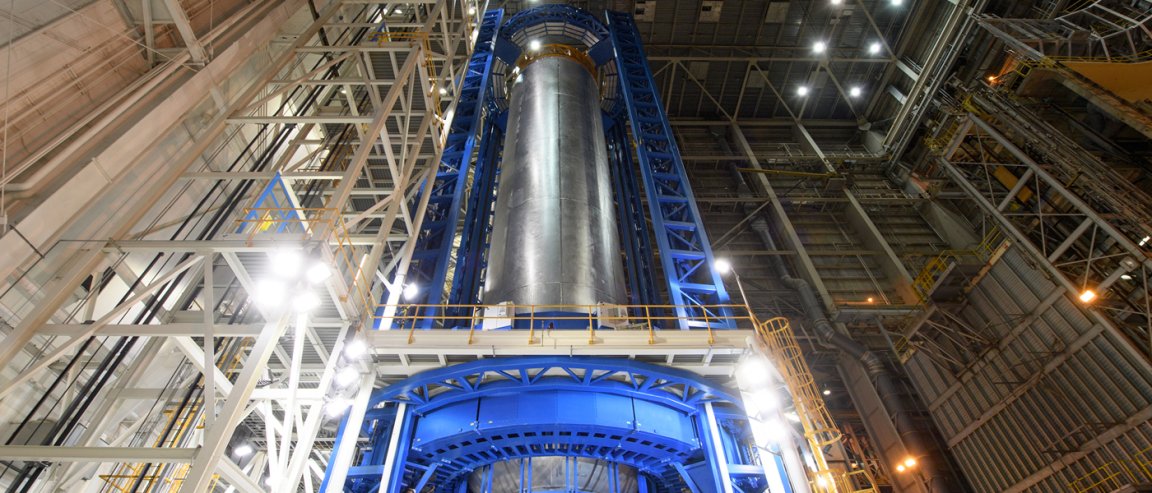
NASA has been eyeing a trip to Mars for a long time now, and has been building the tech to support the journey. The company has been working on space habitats, modules, and the biggest rocket ever, all to meet a 2018 deadline for its first flight.
To that end, the huge rocket is being built piece by piece at NASA’s Michoud Assembly Facility in New Orleans — and the backbone of the Space Launch System is a real whopper. Joined together, the core stage of the rocket stands at 65 meters (212 feet), and can carry 2.3 million pounds of fuel for four RS-25 engines. Welding just wrapped up on the largest part of the core, a 40 meter (130 foot) tall liquid hydrogen tank.
But, other than the fuel tanks, work is also being done on the guts of the rocket. Like a house, the core is being outfitted with wiring, plumbing, and insulation. This will protect the computers, sensors, and other equipment the rocket will be hauling for the journey.
Outside Michoud, NASA has just released details and video on its latest tests of the booster rockets. It showed video of the boosters blowing apart the nozzle plug installed to keep outside elements away from the rocket insides before takeoff.

A lot has been accomplished, but there’s still much to do before this big behemoth brings us to the Moon, let alone Mars.